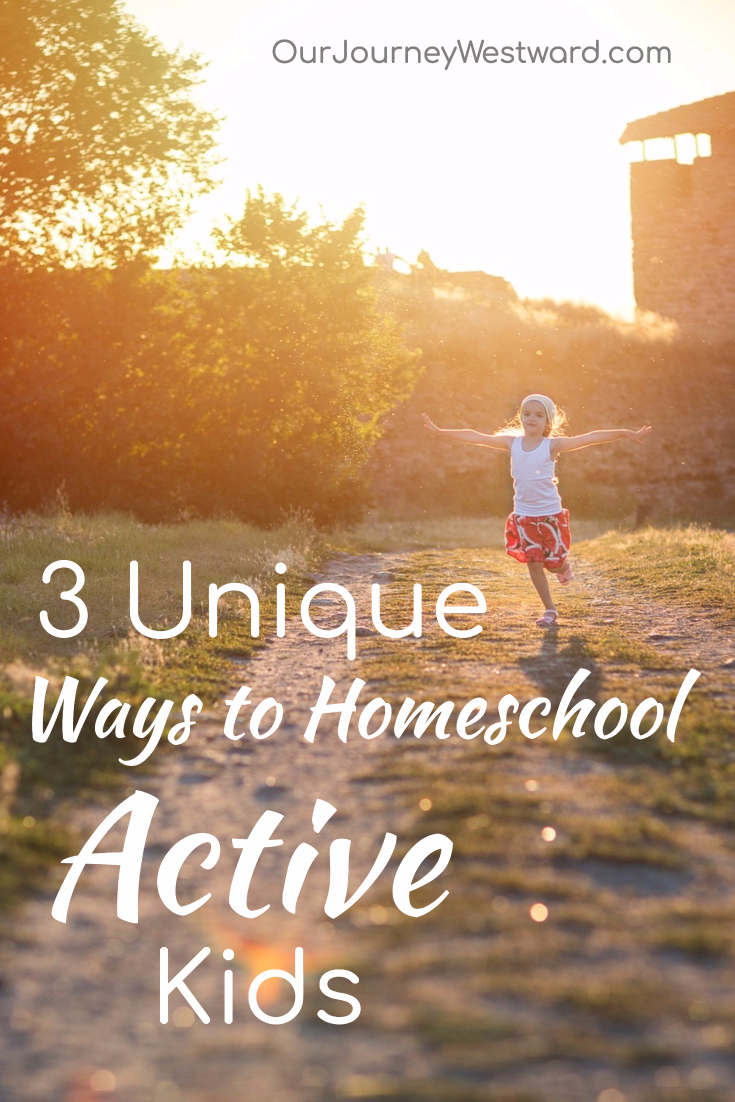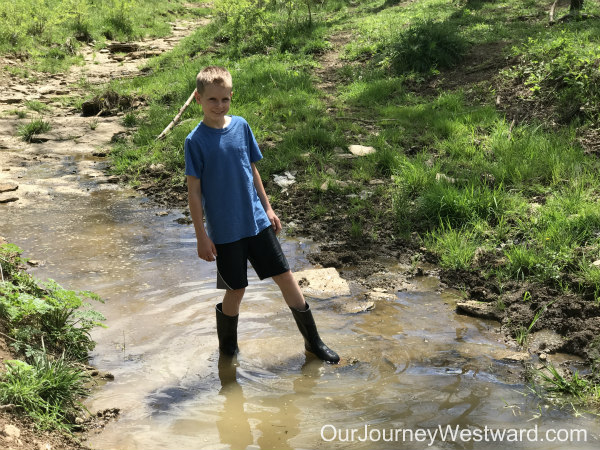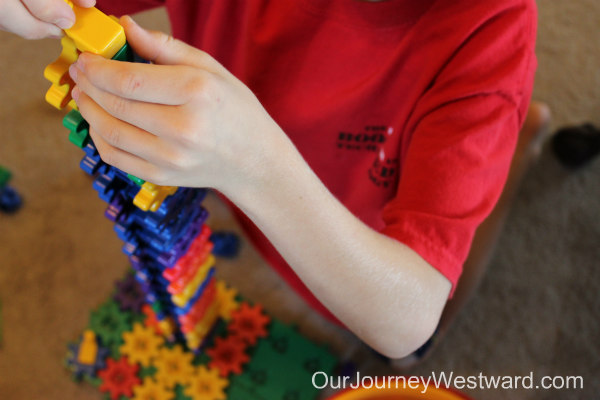3 Unique Ways to Homeschool Active Children
How do you homeschool active children? You know, those sweet children who need to move and tend to make you a nervous wreck as they bounce off the walls. Yeah, them.
You may not know this, but research has shown time and time again that children with ADHD and other energetic types are actually focusing their hardest when they’re fidgeting and jumping. Being forced to sit still in a classroom or at a table could be fighting their natural learning abilities!
Luckily, there are ways to meet both their need to move and your need for them to learn without too much stress. But first, it will be very important that you have an open mind…learning and a little chaos can happen at the same time.

Did you know that an active child who has jumped, danced, sung, or thrown something during a lesson will likely remember that lesson better than if the lesson was strictly read or discussed? It’s true. Most active kiddos are very kinesthetic learners, meaning movement is a top mode of learning for them. Many times, active children will also be quite visual and/or auditory in their learning strengths as well.
With my most active student (who has settled down quite nicely in his late homeschooling years), I always tried to take advantage of his natural energy in learning. Even though it seemed at first that his “bouncing off the walls” was naughty and not conducive to learning, I quickly became convinced that active learning was just as wonderful as learning peacefully at a desk.
Ways To Homeschool Active Children
There are so many ways to learn which might benefit your active child. I hope these ideas help bring chaos into order and inspire you to come up with your own creative solutions!

This post contains affiliate links.
1. Get Outside
Fresh air, space to move, and freedom to make noise are incredibly important for every child, but especially so for an active learner. Besides lots and lots of plain old playtime, you can use outdoor time for creative lessons:
- Practice weekly memory verses while swinging.
- Recite poetry while hopping down the sidewalk.
- Narrate the latest reading selection while walking on the slackline.
- Write spelling words on the driveway with water guns.
- Use paintbrushes dipped in water to write quiz answers on the side of the house.
- Solve math problems with chalk on the driveway.
- Practice multiplication tables while jumping rope.
- Drill states and capitals while passing the baseball.
- Read aloud while your child hangs upside down from a tree branch.
Remember, nature study is a very good option for active learners! Nature study is inherently hands-on, full of movement, and unique enough to keep the attention of most types of children when completed with a plan and purpose in mind. If you need ideas for your outdoor science labs, take a look at the NatureExplorers guides. You may be particularly interested in 100+ Creative Nature Walks since there are plenty of ideas for bite-sized, creative lessons. You’ll get in loads of learning without the commitment of staying on one subject too long (which your active children will appreciate.)
2. Design Productive Indoor Spaces
In Kentucky, we can’t get outdoors every single day. We have at least a few months of weather that are just too cold for anything more than a quick outdoor break to run off some energy. So, I designed some indoor spaces that allow for plenty of movement.
We’re blessed with an unfinished basement where steam can be burned off on scooters, skates, and hopper balls. The ceilings are tall enough for a jump rope, too. We’ve played four square, hopscotch, and more down there. A punching bag and treadmill are around for movement, too.
The schoolroom has always been filled with a variety of potential work areas and I’ve rarely forced anyone to sit anywhere in particular. For lessons, my especially active child gravitated to his desk with swiveling chair (which was constantly swiveling), the cushy couch (which he often hung off of), or the kitchen table (where he usually stood to do his work.) He also loved sitting under tables and even inside souped-up refrigerator boxes.
My less active (but still very busy) second son has frequently enjoyed the Big Joe beanbag chair for reading and the mini-trampoline when working on flashcards or oral spelling words.
Chalkboards and/or whiteboards have always hung on the walls to provide large motor options for writing vocabulary words or solving math problems. too.

3. Teach Moveable Indoor Lessons
Lessons that involve movement are beyond numerous. I’ll offer a few ideas to get your mind headed in the right direction, and I’m sure you’ll easily learn to engage your children in fun active lessons as second nature.
Play together. Playful lessons get the wiggles (and often the giggles) out. Complete any number of learning activities by tossing bean bags back and forth or jumping through hopscotch lines that you’ve placed on the floor with Frog Tape.
Gameschooling is always a wonderful option, too. You might be surprised at how many real academic skills are learned and practiced through games! Oh, and don’t forget hands-on lessons in general for active students. This post full of hands-on math ideas will give you a good idea of what playful lessons can look like.
Use body movement in fun ways. Active children love intrigue. Allowing them to draw pictures to represent new vocabulary words in a tub of sand with their toes is definitely intriguing. Encouraging a puppet show or play to narrate the Battle of Troy rather than regular narration is also intriguing.
Create a salt dough map to demonstrate an understanding of landforms. Make a YouTube video explaining the scientific concepts behind an experiment. Make a playdough model of all the parts of an arachnid. These are all project-based learning ideas that help active children use wiggles to their advantage.
Don’t forget! Allow your children to keep their hands busy during read-alouds when viewing documentaries, or other activities when they need to be relatively still and quiet. This is a great time to pull out LEGO blocks, Spirograph, or handicrafts like weaving kits, cross-stitch kits, or Paint by Sticker books.
Active learning is a gift, not a problem when channeled in a positive way. Find ways to engage physical needs and see how much better a school day can be!
Other posts you may like:
Auditory Brain TrainingUnit Studies
Independent Math Explorations
Homeschooling Gifted
Some active kids are actually gifted learners. If you think you’re dealing with a gifted child, you might find Homeschooling Gifted Kids a helpful book.





We have 5 grandbabies who we are raising and for the first time homeschool. I would love any suggestions they all have adhd a few worse than others we don’t have money to pay for any additional products
Hi Nanna. What a wonderful gift you are giving to your grandchildren through homeschooling. I know ADHD can be a challenge. My biggest tips are to consider food triggers when ADHD tendencies are particularly bad and to look into supplements (like fish oil, for instance) that can help with certain children. I found brain training to be incredibly helpful to build and retrain some of the neurons to fire better. You can learn more about the activities and exercises we did for brain training at https://ourjourneywestward.com/brain-training/.
I ended up homeschooling my children for one year during covid-19. I was so grateful for the resources that were available. I have kids with difficulties (adhd, dyslexia). I don’t believe their is a one size (one type schooling) that fits all. My children are highly active and social. We made it thru the school year.. But these kids wanted their teachers, their friends, and their school back. I would be doing my children a huge disservice keeping them home… It is good to keep in mind everyone’s unique needs. I feel my kids would regress and not learn nearly as many lifeskills/social skills/real world skills if they were kept home. However, I feel like parents should have the right to choose.. I just cannot see for my own children that they would benefit from homeschooling. I even felt bad, because I wanted it to be a fairytale, homeschooling experience, it just wasn’t. So happy they get to go back into the world.
Hi Raquel. I’m really glad we all have choices, too. There is no one-size-fits-all to most things in life and I’m glad you’ve settled into a decision you feel good about. My children, too, have always been highly social, active, and had some unique needs. Homeschooling has been the perfect opportunity for them to soar in life skills, social skills, and real-world skills – as well as academically, emotionally, and in plenty of other ways. We have never considered our homeschool to be anything less than a real opportunity to learn and grow. My children have always had plenty of friends, mentors, and amazing opportunities to socialize, learn, and pursue their unique interests.
After graduating two of my three, I’m happy to report that my children not only thrived while in our homeschool but now thrive in their adult lives, too. I believe I did (and am still doing) exactly the opposite of a disserve to them by providing beautifully for their unique needs in all areas. Nothing is a fairy tale all the time. It generally takes a couple of years to feel confident and joyful in homeschooling, particularly when transitioning from a classroom setting. I’m sorry your experience wasn’t what you had hoped and I wish you the best.
Hello! This was really helpful. I am homeschooling a 10 year old girl, 6 year old boy, 3 year old girl, and … a 9 month old boy. 🙂 The six year old is so active I have a hard time thinking he’s soaking anything in at all. Very different from the oldest girl of course. I let him stand at the table to do a quick worksheet/ problem here and there. But I’d love to come up with creative ways so he can be more involved in a way that he enjoys school! We also live in an apartment in a giant city so it’s a lot harder to get out of the house with the kids by myself. Thank you for the tips :).
He needs lots and lots of movement during and between school activities. When you need him to be still and quiet, provide quiet things to do with his hands – LEGO blocks, play cars, sticker books, etc. 🙂